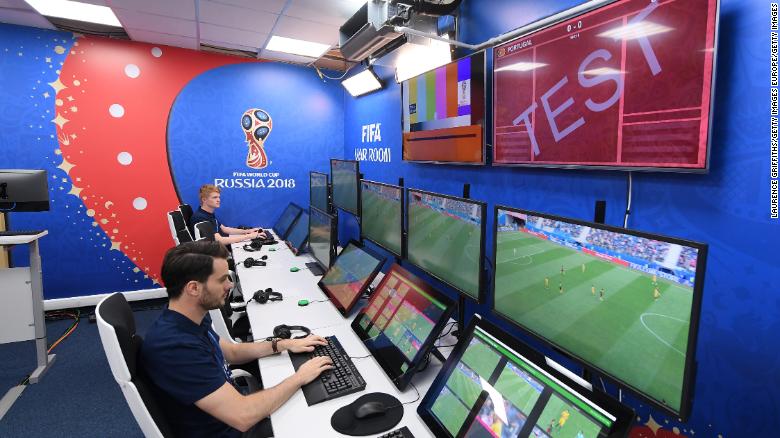The video-assistant referee (VAR) has made his entry in to all the big leagues and international football tournaments. After pilots in smaller countries and cup tournaments football officials deemed the technology fault proof and valuable to current football. Some countries even added an extensive offside recognition system. It uses automatic calibration, line tracking and multi-dimensional analysis to diagnose offside on the centimetre (FIFA, 2018)
Technology has some clear opportunities and advantages to offer to football. Firstly, new imaging and camera techniques offer a completely new and real-life experience. Furthermore, the VAR makes the game indisputably fairer (Webb, 2019). Referee decisions in football are extremely important since many games are decided and dependent on moments. Since football became a sport of billions, technology could help relief pressure on referees and linesman. Before the full introduction of the VAR there was another technology that improved game fairness, the Hawkeye goal line technology. Using live video content and imaging techniques an assessment is made on whether the ball passed the goal line in its full. If so, an automatic message is sent to a connected smartwatch of the referee (Hawkeye Innovations, 2019). A final example of opportunity by technology is the use of chips and data to analyse football matches and player performances. Currently, data is used to inform decision making via staff that analyses match and player data (Rein & Memmert, 2016). This could be expanded with artificial intelligence, and in particular machine learning. Optimisation modelling based on big data could help with tactical planning and also training and fitness scheduling (Rein & Memmert, 2016)
Nonetheless, the rising of technology in football also has its downsides and thereby impacting the core value proposition of football. Football is essentially an entertainment sport and therefore the fans are key for survival. The improvement of the experience at home leads to a weaker desire to go to the stadium (Webb, 2019). Additionally, the VAR has been received with much complaint and discussion by fans and other stakeholders. First of all, it makes the game less attractive since the ecstasy of scoring a goal can be quickly followed by disappointment after VAR interference. Secondly, fans do not see the footage of VAR incidents in the stadium and are left in the dark, compared to the people at home. Another much discussed challenge is that technologies such as the VAR or Hawkeye undermine the power, control, and the respect referees and linesman have. Every wrong decision is corrected in front of the audience and the players (Fransen, 2018).
One thing that is clear is that much emotion and intuition is neutralised by technology. This perhaps improves the fairness of the game, but potentially decreases the amusement value. This development is not very likely to slow down anytime soon. Robotic linesman and potentially even referees do seem a possibility in the future (Livesey, 2018). The question is if technology will initiate the deterioration of football or that it will be perfectly applied and halted where necessary to maintain entertainment value.
References
FIFA. (2018, May 13). The Virtual Offside Line. Retrieved from FIFA Football Technology: https://football-technology.fifa.com/en/media-tiles/the-virtual-offside-line/
Fransen, J. (2018, July 10). How video assistant referees could undermine on-field referees at the FIFA World Cup. Retrieved from The Conversation: https://theconversation.com/how-video-assistant-referees-could-undermine-on-field-referees-at-the-fifa-world-cup-98466
Hawkeye Innovations. (2019, February 20). Hawkeye in Football. Retrieved from Hawkeye Innovations: https://www.hawkeyeinnovations.com/sports/football
Livesey, J. (2018, February 16). Robot football referees and linesmen could be a reality by 2030 with humanoid players not far behind. Retrieved from Mirror: https://www.mirror.co.uk/sport/football/news/robot-football-referees-linesmen-could-12030671
Rein, R., & Memmert, D. (2016). Big data and tactical analysis in elite soccer: future challenges and opportunities for sports science. SpringerPlus, 5(1), 1-13.
Webb, T. (2019, August 19). Goal! Or is it? How technology – and not just VAR – is changing sport. Retrieved from The Conversation: http://theconversation.com/goal-or-is-it-how-technology-and-not-just-var-is-changing-sport-121838


